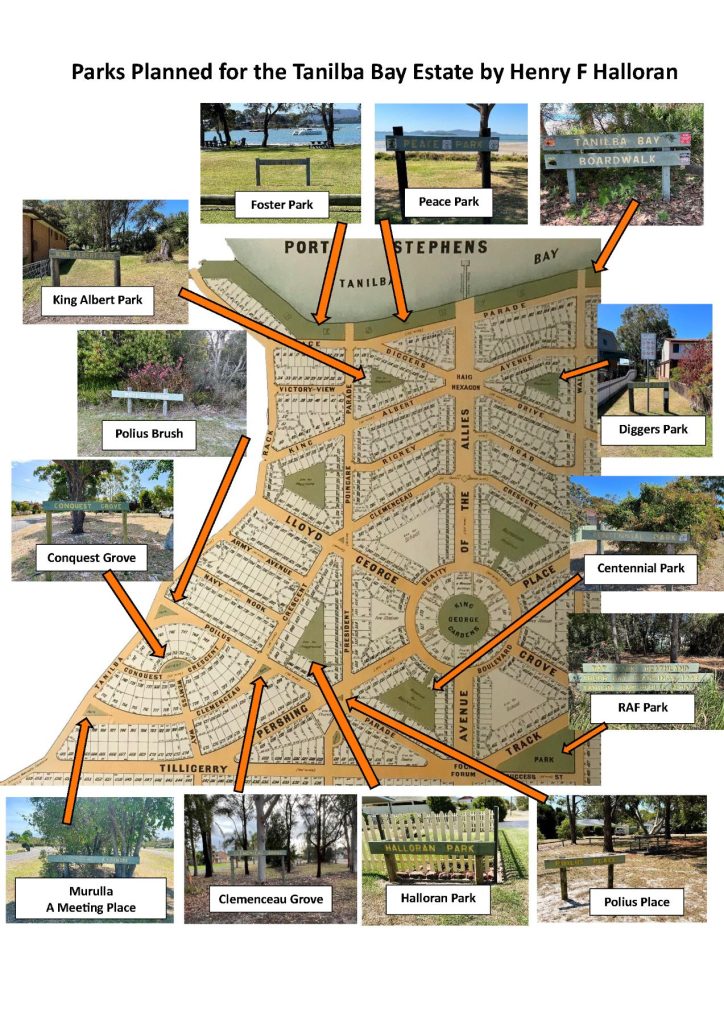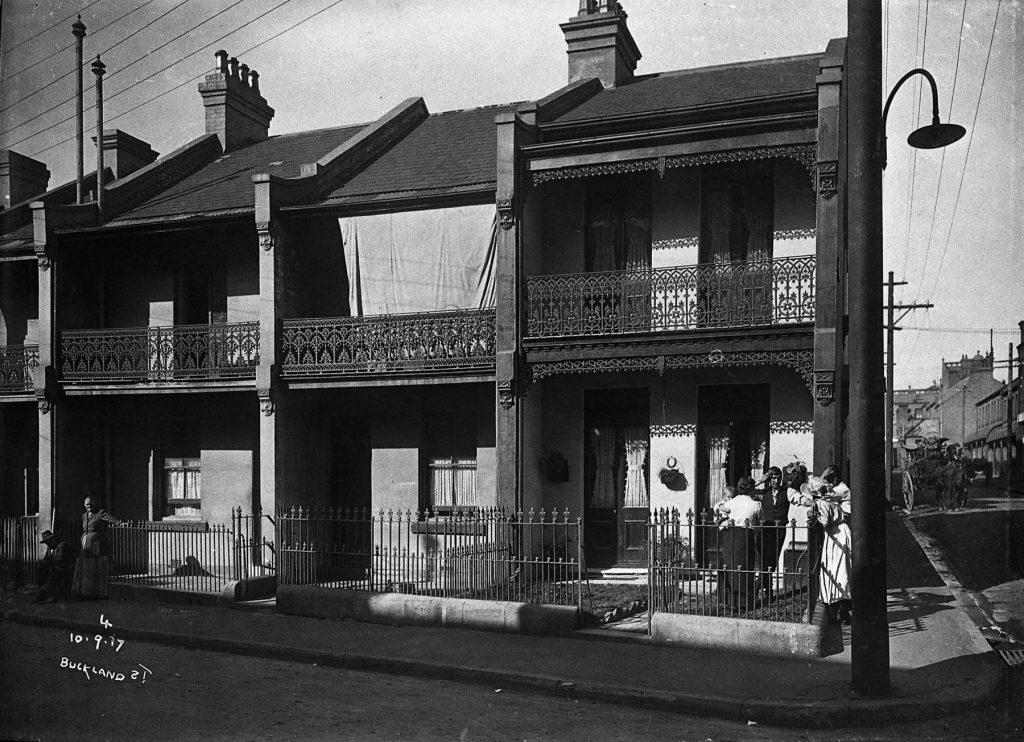Your cart is currently empty!
Tanilba Bay’s Parks, Gardens & Reserves
Explore the Legacy of Green Spaces, Pedestrian-Friendly Designs, & Community Well-being in Tanilba Bay.

Henry F Halloran & The Garden City Movement
Henry F Halloran embraced the Garden City movement in town planning during the early 1920s, advocating for sustainable and harmonious urban development that incorporated green spaces, pedestrian-friendly designs, and a focus on community well-being.
His implementation of Garden City principles aimed to create environments that balanced urbanisation with nature, promoting healthier and more liveable cities for residents.
What was the inspiration for the design of Tanilba Bay?
Many assume that Henry F Halloran’s subdivision layouts were inspired solely by Walter Burley Griffin’s design of Canberra. However, the truth is that both Burley Griffin and Henry were influenced, to a varying degree by a wave of innovative thought in town planning which began in Britain in the late 19th century, emphasising the integration of green spaces, community-oriented designs, and sustainable urban development principles.


The Garden City Movement
The Garden City movement, influenced significantly by Henry’s uncle Ferdinand Hamilton Reuss Jnr, was as impactful as that of Burley Griffin. In 1878, Ferdinand won a competition for Annandale’s design, predating the movement by nearly 20 years. His plan, a standard rectangular grid layout, included innovative concepts later embraced by the Garden City movement: large lots, wide streets, waterfront crescent, public building sites, no back lanes, and small reserves.


What were the objectives of the Garden City Movement?
The Garden City movement emerged from a deep need for social reform amid the grim conditions of crowded urban slums. These areas were plagued by high crime, pollution, moral decay, and disease outbreaks, leading to social, political, and industrial unrest. Advocating sustainable urban planning, the movement prioritized green spaces, community-centric designs, and better living conditions for all residents.
An example of a subdivision using a typical grid pattern with straight streets, L-shaped corners and rectangular lots.
What did typical subdivisions exhibit before the Garden City Movement?
- A pattern of streets and lanes with dead ends that were bleak and chaotic to navigate.
- Pocket handkerchief allotments, negligible garden and yard space, and relatively high housing density.
- Narrow-fronted terraces and row houses.
- Severe overcrowding of small, poorly lit, and ventilated rooms.
- Conspicuous absence of trees and open spaces.


Example of a subdivision based on Garden City plans with internal reserves and curved streets.
What were the features of a Garden City Subdivision?
- Rounded street corners because they improved traffic safety.
- The chequerboard layout was replaced by either a curvilinear symmetrical or contour-controlled layout.
- Curvilinear symmetrical featured short, or straight streets and were the most popular.
- The contour-controlled layout was used to accommodate the dictates of steep or hilly terrain.
- Huge amounts of public spaces: parks, squares, reserves, and play and picnic grounds which encouraged social interaction.
Aerial photograph of Tanilba House with surrounding nature spaces.
Source: Tanilba House
Featured Parks
These featured parks exemplify Henry F Halloran’s vision for planned open spaces, gardens, and green belts surrounding developments, offering aesthetic relief in urban areas. Additionally, they showcase gardens developed by local residents, embodying community engagement and beautification efforts.
Why are There so Many Parks in Tanilba Bay?
Garden Cities were envisioned as towns designed to promote healthy living, offering a departure from the cramped and unsanitary conditions of city slums. In Henry F Halloran’s estates, gardens held significant value as they provided not only social and health benefits but were also believed to foster moral growth through gardening.
Planned open spaces, including the invention of internal reserves, played a crucial role. These reserves, enclosed by house blocks and accessible only to pedestrians, provided safe areas for children to play away from traffic while remaining within sight of their homes. This innovative approach to urban planning exemplified the Garden City movement’s commitment to creating liveable and harmonious environments for residents.
Discover, Share, Preserve: Your Port Stephens research matters!
Interested in learning more about your history? Share your research with us or explore our publications in our shop. Your part in history awaits!





















